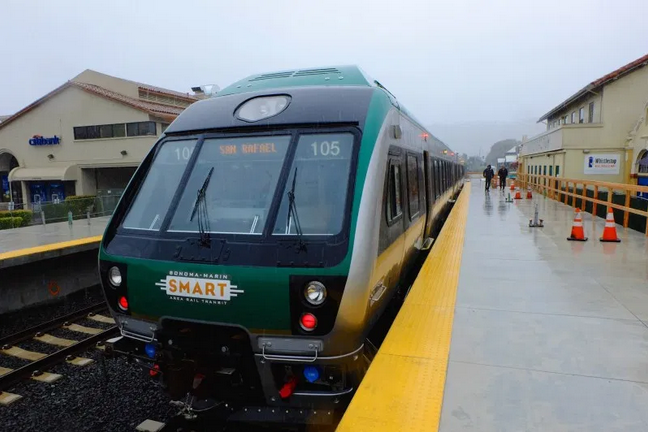Near the top of its recently released California Transportation Carbon Reduction Strategy, Caltrans notes that although switching to electric vehicles is important and necessary, it is clearly not enough - that "to achieve carbon neutrality, Californians need to drive less."
This is Caltrans - California's state transportation department - publicly and prominently acknowledging that reducing vehicle miles traveled (VMT) is absolutely necessary for reducing carbon emissions. The document goes on to outline the three "pillars" of the carbon reduction strategy: switching to electric vehicles, encouraging active transportation modes, and investing in public transit.
This draft document - now accepting public comment at carbon.reduction@dot.ca.gov through August 18, 2023 - was written to comply with federal requirements for the Infrastructure and Investment Act (IIJA), which every year allocates over $100 million to California under its Carbon Reduction Program (CRP). Caltrans passes 65 percent of that on to regions, based on population, and uses the balance for state projects.
The regions are required to use a competitive process to select projects for funding. They can choose their own process and standards, but the funded projects must "support bicycle and pedestrian, rail and transit, zero-emission vehicles and infrastructure, and conversions of existing lanes to priced managed lanes, in alignment with Caltrans’ Carbon Reduction Strategy."
For the statewide portion of the CRP, Caltrans will focus on converting existing freeway lanes into price-managed lanes, and investing any revenue into low-carbon transportation options. The Carbon Reduction Strategy notes:
Projects that widen highways, adding new HOT or Express lanes to existing general purpose lanes, can substantially increase VMT. Although [such] projects may reduce congestion in the short-term and support transit on highways, substantial increases in VMT run counter to California’s carbon reduction goals. To maximize carbon benefit and minimize impact on adjacent communities, State CRP will only fund conversions of existing lanes to priced managed lanes.
The bulk of the document lists projects in the three pillar categories throughout the state that are in various stages of planning or implementing, and that would make good use of CRP funds. Note, though, that the amount of money that would be needed to support them is much more than what's available from the IIJA program, even accounting for the requirement for nonfederal matching funds. It's essentially a list of potential and actual projects that "represent a cross-section of California’s efforts to decarbonize transportation" - and make the state of California look really serious about investing in good, climate-friendly things.
Nevertheless, the projects listed in this document are only sample projects, not necessarily ones that are receiving federal funding. For example, it lists the bike path on the Oakland Bay Bridge western span into San Francisco as if it's in the active planning stages, but there's little sign of that happening.
Amazingly, between the IIJA and the Inflation Reduction Act there is more than $1.5 trillion available nationwide for projects that move climate action forward. Only about three percent of that funding has been allocated so far. California alone has hundreds of climate programs under many agencies, covering land use, water, waste, and clean energy. Each of these agencies is working on similar carbon reduction plans and strategies so they can be ready as that money starts to be distributed.
Rebuilding CA tracks the federal funds coming to California here.
It's key to note that not every state has been investing its share of federal funding in climate-friendly ways. And while California is miles ahead of many states on this front, at the moment we are still investing in projects that will undermine climate goals far into the future, including widening highways and accommodating more car traffic.
Vigilance will be needed.
Hat tip to Irvin Dawid of Planetizen, who brought this to our attention.






